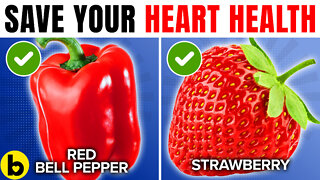12 Strange Facts You Didn’t Know About Your Own Mouth
Here are the 12 strange facts you didn't know about your own mouth. From hidden teeth to medieval kissing, from thin skin to assisted digestion, the mysteries of the mouth are manifold (whew! try saying that one three times fast).
#Facts #FunFacts #HumanBody
Music:
https://www.youtube.com/audiolibrary/...
Summary:
1. The color of our lips: Why are the lips a different color from the rest of the face? The skin on our lips looks clearly different from the rest of our body. That is because it is much thinner in comparison. Skin usually has three separate layers – the stratum corneum, the epidermis and the dermis. The protective stratum corneum is the outer layer that is visible, the epidermis is the layer of skin underneath it, and the dermis is the lowermost layer.
2. H2O: Water may have no taste, but we need it to be able to taste anything. Our taste buds are able to pick up chemicals like salt and sugar because they’re dissolved in our saliva. Much like kissing, if you try to eat with a dry mouth, you’re not going to have a lot of fun. Saliva is the very first fluid that comes into contact with the food we eat, and believe it or not, we wouldn’t be able to taste anything without saliva!
3. Speaking in Tongues: The French kiss got its English name at the turn of the 20th century when the comparatively-reserved English saw France as a cesspool of licentious sexual practices. But the French word for the practice changed in 2013, when The Petit Robert 2014 French dictionary added the verb “se galocher,” to kiss with tongue. Before then, it was called un baiser amoureux (“a lover’s kiss”) or un baiser avec la langue (“a kiss with tongue”).
4. Tongue prints are a thing: If you ever find yourself at the scene of a crime, don’t lick anything. Much like fingerprints, tongue prints are unique. Better not kiss anything either; lip prints are thought to be idiosyncratic as well.
5. Digestion actually starts in the mouth: Our saliva acts as a starter to break down carbohydrates thanks to an enzyme called amylase. The esophagus is a tube, controlled by muscles and autonomic nerves, that helps food to travel from the mouth to the stomach.
6. The wrong pipe: Yes, when you choke on food, it might actually be going down the wrong pipe. When you’re swallowing food, the epiglottis closes over the windpipe like a trapdoor to stop food from going into your respiratory system. But the system isn’t foolproof, especially when you’re swallowing liquids, which move faster and are harder to manage.
7. X marks the spot: The X’s and O’s on the bottom of love letters have their origins in actual kisses. In Medieval Europe, many people could not read or write, so they signed documents with an X and then kissed it to show their sincerity.
8. Taste buds: The tongue isn’t the only part of the body where you can find taste buds. Of the approximately 10,000 taste buds in our mouth 8,000 of them are on the tongue and the rest are on the cheeks, lips, the roof of our mouth and under our tongues.
9. Your tongue is made up of multiple muscles: While the tongue isn’t the strongest muscle in the body, it’s one of the strangest. It’s actually made up of eight muscles, four intrinsic muscles which change the tongue’s shape and four extrinsic muscles which change its position. The extrinsic muscles are attached to the bone at one end, but the intrinsic muscles are the only ones in the body that aren’t directly anchored to the bone.
10. Kiss and Tell: A study entitled “Examining the Possible Functions of Kissing in Romantic Relationships” didn’t find much evidence that the primary purpose of kissing was getting the two partners aroused. Instead, they found that kissing is a “mate assessment test,” where people, especially women, figure out if a potential mate is worth their while.
11. Wisdom teeth: Back in our evolutionary past, when we foraged for tough foods like nuts and roots, wisdom teeth were a necessary aid to grinding these foods up. Today, when we forage for processed foods in our cupboards, wisdom teeth are mostly useful for getting people to say stupid things under dental anesthetic.
12. Our lips are more delicate than you think: The neurons that represent our sense of touch occur in the brain’s postcentral gyrus, and specific areas in the gyrus correspond to the sense of touch in specific body parts. The lips (along with the fingers) have the disproportionately largest areas, making them more sensitive than almost anywhere else in the body.
-
 9:38
9:38
Bestie
1 year ago7 Red Foods You Must Eat That Can Save Your Heart Health
5791 -
 10:02
10:02
TOP INFORMATION - TECHNOLOGY
3 years ago $0.01 earned10 Facts About Lexus You Didn’t Know
1721 -
 1:00:21
1:00:21
MYLUNCHBREAK CHANNEL PAGE
16 hours agoA Little Season in New York City
50.6K104 -
 11:56
11:56
China Uncensored
18 hours agoThe Philippines Threaten War with China
51.2K34 -
 33:00
33:00
Degenerate Jay
22 hours agoThe James Bond Games Have Been Lost To Time
27.2K7 -
 29:11
29:11
The Why Files
1 day agoMystery in Cisco Grove: Don Shrum’s Encounter with UFOs, Aliens and Robots
47K27 -
 2:26:44
2:26:44
Mally_Mouse
14 hours agoLet's Play -- Crowd Control Minecraft
49K5 -
 2:19:18
2:19:18
The Quartering
19 hours agoTrump Mistrial Bombshell, RNC Plans For Trump In Jail & Maybe Some Video Games
88.1K156 -
 3:10:32
3:10:32
SNEAKO
19 hours agoIs Trump a Criminal?
132K120 -
 2:22:40
2:22:40
Jewels Jones Live ®
1 day agoTHE ART OF LAWFARE | A Political Rendezvous - Ep. 79
85.8K32